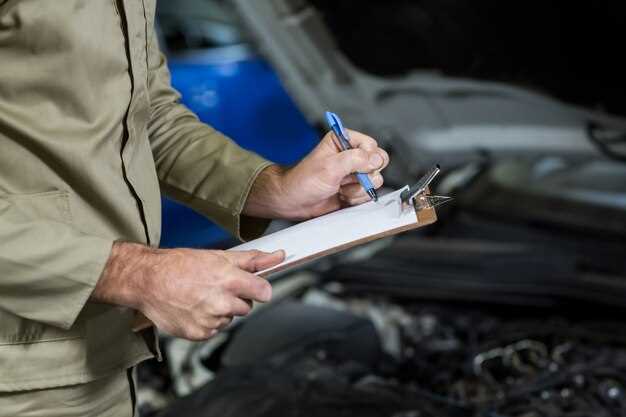
Investing in a classic car can be one of the most rewarding experiences for automotive enthusiasts. However, the nostalgia and allure of these vintage vehicles can often blind potential buyers to the complexities involved in their purchase. Before committing to a classic car, it is essential to conduct thorough research into its history, as this can significantly impact both the vehicle’s value and your satisfaction as an owner.
One of the primary reasons to investigate a classic car’s history is to uncover any potential issues that may affect its performance and longevity. Understanding past accidents, repairs, and restoration work is critical to assessing how well the car has been cared for and what future maintenance may be required. Documentation, such as service records and ownership history, can provide invaluable insights into the vehicle’s condition, offering a clearer picture beyond mere aesthetics.
Additionally, the provenance of a classic car often plays a crucial role in determining its market worth. Car enthusiasts and collectors often seek vehicles with well-documented histories, including limited editions or those with ties to significant automotive events. By researching the model’s background, including its production numbers and unique features, buyers can make informed decisions that could enhance their investment’s potential in the long run.
Finally, understanding the historical context of a classic car can deepen your appreciation for the vehicle itself. Learning about the era it represents, the challenges faced by its manufacturers, and its impact on automotive culture can transform a simple purchase into a meaningful acquisition. Such knowledge can not only enhance ownership satisfaction but also enrich interactions with fellow enthusiasts and collectors.
Understand the Car’s Historical Significance and Production Background
When considering the purchase of a classic car, it is crucial to delve into its historical significance and production background. Each classic car not only represents a specific era in automotive design and engineering but also embodies the socio-economic conditions, technological advancements, and cultural values of its time. Understanding this context can enhance your appreciation of the vehicle and inform your purchasing decision.
Researching the historical significance of a car involves examining its role in automotive history. For example, certain models may have introduced groundbreaking technologies, such as fuel injection, safety features, or hybrid engines. Additionally, some cars are linked to pivotal moments in history, serving as symbols of change or innovation. Cars that were used in films, represented cultural movements, or were part of significant events can carry a narrative that adds to their desirability.
Moreover, the production background of the car is equally important. This includes knowing the manufacturer, the production numbers, and any notable changes that occurred during the car’s production run. Limited editions or models produced during significant transitions in a company’s history often hold greater value. Understanding the factors that influenced production, such as economic conditions, resource availability, or competition in the market, can provide insight into the car’s rarity and collectibility.
Another aspect to explore is the model’s reception at the time of release. How the car was perceived compared to its competitors can illuminate its importance in the automotive landscape. Consumer reviews, sales figures, and awards or accolades from automotive experts can all contribute to understanding the vehicle’s legacy.
Ultimately, comprehending a classic car’s historical significance and production background enhances not only your knowledge but also your investment. It aids in identifying authentic models, recognizing potential future value, and making an informed decision all while enjoying the rich history that each classic car holds.
Check for Previous Ownership and Maintenance Records

When considering the purchase of a classic car, it is crucial to investigate its previous ownership and maintenance history. This information provides insights into the car’s past and can significantly influence both its value and reliability.
Start by obtaining details on previous owners. A vehicle with fewer owners is often preferable, as it may indicate consistent care and attention. Researching the ownership timeline can also reveal how the car was used–whether it was a daily driver or a garage queen. This context can help assess wear and potential restoration needs.
Maintenance records are equally important. Comprehensive service documentation should detail routine maintenance, major repairs, and any modifications made to the vehicle. Look for records that illustrate a proactive approach to maintenance, such as regular oil changes, brake services, and timing belt replacements. A well-documented service history suggests that the car has been cared for and may require fewer immediate repairs.
Also, check for any major accidents or incidents in the car’s past. Records of collisions can reveal hidden damages that may not be immediately apparent. Additionally, any restorations performed should be documented to ensure quality and authenticity. A qualified mechanic can help assess the quality of previous repairs and restorations, making it a worthy investment prior to purchase.
In summary, thoroughly checking for previous ownership and maintenance records is an essential step in the classic car buying process. This information not only informs the buyer about potential issues but also enhances understanding of the vehicle’s history, aiding in making an informed decision.
Identify Common Issues and Market Trends for Specific Models

When considering the purchase of a classic car, understanding the common issues and market trends for specific models is essential. Each classic car has its unique set of challenges that can significantly impact both performance and resale value.
For instance, the Ford Mustang, particularly the 1965-1970 models, is known for rust issues, especially in the floor pans and frame rails. These areas often deteriorate due to age and poor storage conditions. Furthermore, the engine design can lead to oil leaks, and the electrical systems may be outdated, requiring upgrades to improve reliability.
Another popular classic, the Chevrolet Corvette, especially from the 1963-1982 era, often faces problems related to its fiberglass body. Cracks and delamination can occur over time, affecting aesthetics and structural integrity. Additionally, early models may experience issues with their electrical systems, and owner modifications can lead to inconsistencies in parts and performance.
Market trends vary by model and region. The Porsche 911 has demonstrated steady appreciation in value over the years, driven by its iconic status and continuous demand. Collectors often seek out mechanical condition, originality, and documentation for service history, which can drastically affect pricing. Conversely, the classic Volkswagen Beetle has seen fluctuations in value, largely influenced by restoration quality and the increasing interest in vintage vehicles among younger generations.
Researching common issues can save potential buyers from costly repairs. Forums, owner clubs, and comprehensive guides can provide insights into particular quirks of specific models. Additionally, staying informed about market trends through auctions, classic car shows, and online marketplaces can help gauge fair prices and investment potential.
In summary, identifying common issues and observing market trends for specific classic car models are crucial steps in making an informed purchase. Understanding these factors will not only ensure enjoyment of the vehicle but also safeguard against unexpected expenses and help maintain or increase its market value.
